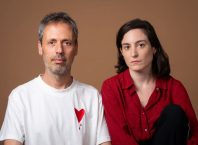
Israel Museum press release
A newly restored 18th-century synagogue from Suriname – one of only two remaining examples – will be a highlight of the Israel Museum’s newly installed Mandel Wing for Jewish Art and Life, on view beginning July 26, 2010, when the Museum opens its expanded and renewed campus to the public. This rare and striking South American synagogue will stand alongside synagogue interiors from Italy, Germany, and India as part of the Museum’s new Synagogue Route, which will offer visitors the opportunity for a notably rich experience with Jewish ritual traditions from around the world. On display with its original furniture and decorations and a sand floor, the Tzedek ve-Shalom Synagogue will offer visitors a glimpse into Suriname’s once vibrant Jewish community.
Built in 1736 in the capital city of Paramaribo, Suriname, Tzedek ve-Shalom ceased to function as a place of worship in the 1990s. In order to rescue this important example of the Jewish life of this remote Jewish community, the Israel Museum approached its leaders with the aim of restoring and preserving the synagogue on its campus for the benefit of future generations of visitors from around the world. The synagogue’s interior and its original ceremonial objects and furnishings were transferred to the Museum in 1999, where it has now been meticulously refurbished.
“The addition of the Tzedek ve-Shalom Synagogue to our galleries makes the Israel Museum the only museum worldwide where visitors can see together in one venue four original synagogues from three continents,” said James S. Snyder, Anne and Jerome Fisher Director of the Israel Museum. “We are thrilled to be able to offer this immersive experience with Jewish culture and history and to enhance our exceptional holdings in Jewish Art and Life with this stunning addition.”
Suriname’s Jewish community took root in the mid-17th century, when Jews of Spanish and Portuguese origin who had fled to Holland during the Inquisition immigrated to Suriname among the country’s earliest European settlers. Tzedek ve-Shalom is typical of Spanish and Portuguese synagogues in the New World and is one of the earliest such examples from the region. Directly inspired by the Esnoga, the great Portuguese synagogue of Amsterdam, its structure integrates traditional European design with local architectural features such as a simple, symmetrical structure; white walls and large windows that invite sunlight; and a sand-coated floor. Majestic brass chandeliers of Dutch manufacture hang from the ceiling.
The installation of the Suriname synagogue is part of a larger reorganization and reinstallation of all of the Israel Museum’s collection gallery wings, including the renewal of its Jewish Art and Life Wing. Combining its Judaica and Jewish Ethnography collections, the new Mandel Wing for Jewish Art and Life leads visitors through the daily and ritual markers of the Jewish calendar from cultures around the world, with installations that explore the aesthetic value of individual objects and displays, as well as their social and historical contexts. The new Synagogue Route, curated by Tania Coen-Uzzielli, Curator of the Skirball Department of Judaica, comprises four synagogue interiors, with related ritual objects displayed within each space and along the adjacent route. In addition to the Tzedek ve-Shalom Synagogue, the route features:
• The 16th century Kadavumbagam (“by the side of the landing place”) Synagogue, from Cochin, India, whose carved wooden interior includes motifs like those found in surrounding mosques and Hindu temples;
• an 18th century Italian Baroque synagogue from the small town of Vittorio Veneto in Northern Italy, which served a small local Ashkenazi community that settled in the area during the Middle Ages and was abandoned when the Jewish community moved to larger urban centers in the 19th century;
• a 1735 synagogue from the market town of Horb in Southern Germany, the only surviving example of the region’s painted wooden synagogues, which later served as a barn before it was rediscovered and transferred to the Israel Museum in 1970.
Jack, Joseph, and Morton Mandel Wing for Jewish Art and Life
The Jewish Art and Life Wing presents selections from the Museum’s comprehensive collections of Judaica and Jewish Ethnography. Supported by a $12-million gift from Jack, Joseph, and Morton Mandel through the Mandel Supporting Foundations, the reinstalled Wing is designed to provide a comprehensive picture of Jewish cultural traditions, from the Middle Ages to the present day, integrating the sacred and secular dimensions of life throughout the Jewish world. Five main themes lead visitors through the daily and ritual markers of the Jewish calendar, with installations that highlight the aesthetic value of individual objects together with their social and historical contexts. Contemporary Judaica and works of art by contemporary artists enhance the presentation.
As the Museum looks toward the opening of its completed and renewed campus in July 2010, it continues to present programs on-site in the Shrine of the Book and Model of Second Temple Period Jerusalem complex, and the Ruth Youth Wing, as well as at its off-site locations in Jerusalem at the Rockefeller Archaeological Museum and the historic Ticho House in downtown Jerusalem.





